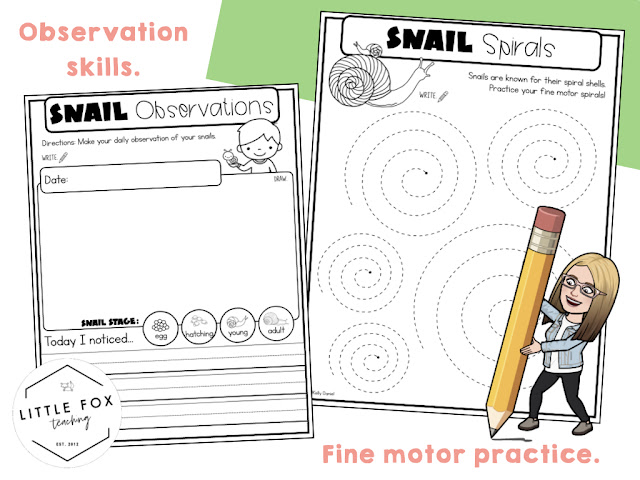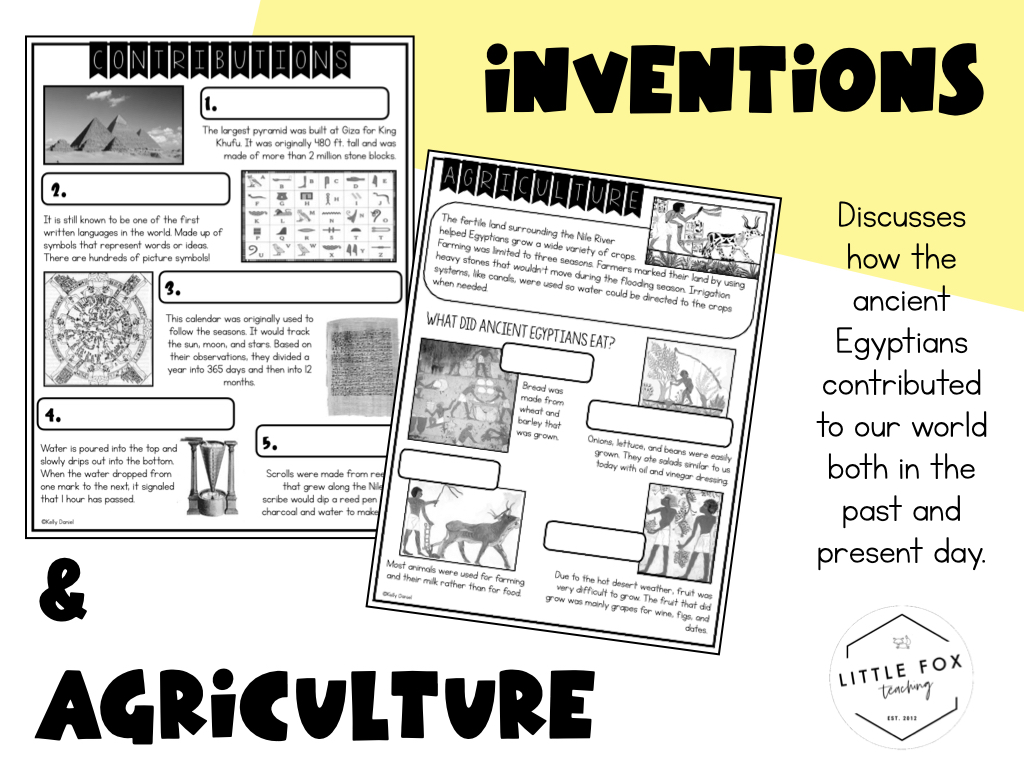March 25, 2021
A Study of Snails | Kindergarten Science Unit
Last year was the very first year I learned about snails alongside my students. I was excited for this unit - a part of our study of the garden/plants - because I had always taught about butterflies. Although fun, it's been done so many times and to have the opportunity to learn about snails was something new...even for me!
When I taught as a kindergarten English teacher for a French-American school, my French colleagues taught the science and French language aspect of this unit whereas I was responsible for teaching my ELA objectives, but through the theme of snails. You can read all about my lesson ideas and what I did in ELA for snails here.
But now that I'm back to being a SAHM I thought it would be fun to create something that other teachers could use or even parents who may be distance learning still or homeschooling. Although what my French colleagues came up with was so fun to observe, there would be no way I could get everything translated. So, I chose to create a workbook that covers the basics of this unit and the scientific skills that go with it!
Here's what's inside!
An introduction to snails!
Life Cycles & Anatomy
Recommended Watching
Making Observations & Fine Motor Practice
Choose your observation note style
A home observation & new class pet
- large aquarium tank with a ventilated covering
- dirt from outside
- collection of sticks, plants, and rocks (places for snails to hide are great!)
- a spray bottle of water to keep things moist inside
- snails love fruits and veggies (avoid citrus) and leafy green leaves
- they also love calcium (to keep their shells strong) so items like cuttlefish bones and egg shells are great to include in the tank
March 24, 2021
Summer Break Activity Packet + 1st Grade Prep!
Summer break will be here before we know it - ending yet another unforgettable year.
Today I am excited to finally share the final break activity packet as a part of my year-round bundle! Each break from school I always try to send something home with my students as a means to keep kids thinking and engaged with the concepts we've learned in class. Parents also really appreciate this packet because it allows them to see what their child is learning and have something to take on family vacations.
The "summer slump" can definitely impact a child and often us teachers see a little bit of a decline once school starts up again. I definitely think kids should be kids and enjoy their time away from school, but as the new year begins to come around I couldn't encourage parents to kickstart the year with some academic practice and review.
This Summer Break packet includes a variety of kindergarten ELA skill review as well as some first grade prep. My goal is to have my students review the main ELA skills we've spent a lot of time on throughout the year. These skills include:
- alphabet recognition (reading/writing)
- name writing practice (using 1 uppercase and the rest lowercase)
- phonetic spelling
- syllables
- rhyming words
- beginning sounds
- story sequencing/retelling
- creative writing
- sight word spelling (look, say, cover, write, check)
- writing planning sheet and first draft paper
- sentence structure review
- SEL activities
Pick up the bundle!
- Fall Break
- Winter Break
- Spring Break
- and Summer Break + 1st Grade Prep
March 19, 2021
Exploring Ancient Egypt
When I taught second grade we had an entire Social Studies theme on ancient civilizations. We explored maps and developed map reading skills, geography (continents and oceans), climates, and the other obvious stuff like culture, religion, language, and contributions or inventions. Learning about ancient cultures are always a hit with my students and today I'm excited to share the newest workbook for students!
Ancient Egypt
This workbook has three different pages for Egypt's geography: located on the continent of Africa, identify within Africa where the country is located, and label the seas/rivers and cities of note. Students use tools like word banks and keys to complete that section of notes.
Climate & Land
Inventions/Contributions
Recommended Watching:
Language & Culture
Additional Learning Opportunities
- Mummification & the Afterlife
- The Great Pyramids (fast forward to pyramids)
- Pharaohs and Cleopatra
March 12, 2021
Spring Break Activity Packet
Spring Break Activities
Activity Packet Includes:
Students color in a flower for every book they read or have read to them. This can also include books on Epic, Khan Academy Kids, Vooks, or any other reading platform (for those distance learners).
Lowercase letters and using them in their names and writing becomes a key focus for us in the second half of the year. My kinders begin making that transition before winter break, so it's always nice to add this little review for them.
SEL (social-emotional learning) is always good to review all year long. I always include this page in my activity packets for break in attempts to keep them thinking about ways to fill buckets even away from the classroom. 2021 needs all the kindness it can get!
Sequencing events in a story is another big kinder reading skill that we work on leading up to winter break and throughout the remainder of the year.
This is a great way to keep students writing during breaks. They are to write about 1 thing they did during break. You can even have this as something they return back to school with to share with the class.
Students search around their homes for things that begin with each letter of the alphabet. They can also clip out pictures from magazines for additional practice.
A fun coloring page for students to use while practicing their sight word recognition.
I'm excited to include this reader in this resource because parents and students love them. Easy prep for families and it's a great way for students to show off their reading and inventive spelling to their parents. It's also a great way to reinforce the sight words "I" and "see".
Hey there!






















